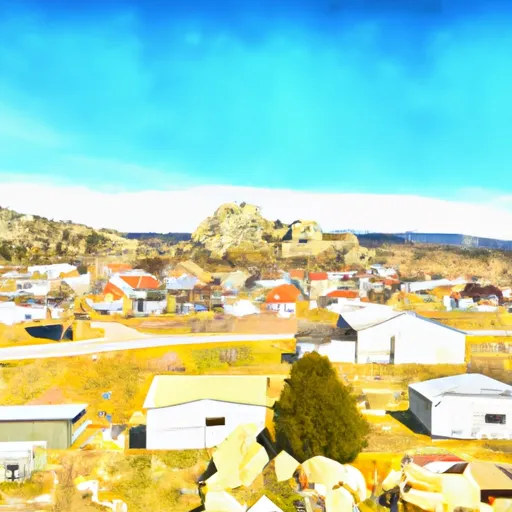-
 Snoflo Premium
Snoflo Premium
Get unlimited access to all our content
With no Ad interruptions! - Start Your Free Trial Login with existing account
Leiter
Eden Index
Climate
7.4
•
Recreation
•
Community
•
Safeguard
3.0/10

Leiter, Wyoming is a small unincorporated community situated in the northeastern part of the state. Known for its scenic beauty, Leiter experiences a semi-arid climate with cold winters and warm summers. The average annual temperature is around 45°F (7°C), with temperatures dropping below freezing during winter months and reaching highs of around 90°F (32°C) in summer. The region receives an average of 14 inches of precipitation each year, with most of it falling as snow during winter.
Leiter is surrounded by diverse hydrology constituents, including numerous rivers and streams that provide ample fishing opportunities. Clear and swift-running creeks make it an ideal location for trout fishing, attracting anglers from far and wide. Additionally, the area's hydrological systems support a wide variety of wildlife, making it a popular spot for birdwatching and wildlife photography.
Outdoor recreation enthusiasts will find plenty to enjoy in Leiter. The nearby Bighorn National Forest offers opportunities for hiking, camping, and wildlife viewing. Visitors can explore the forest's pristine trails or go horseback riding through its picturesque landscapes. Hunting is also a popular activity in the region, with opportunities for big game such as elk, deer, and antelope. With its splendid natural surroundings and recreational opportunities, Leiter is a haven for those seeking outdoor adventures in Wyoming.
What is the Eden Index?
The Snoflo Eden Index serves as a comprehensive rating system for regions, evaluating their desirability through a holistic assessment of climate health, outdoor recreation opportunities, and natural disaster risk, acknowledging the profound impact of these factors on livability and well-being.
Climate Health Indicator (CHI): 7.4
Leiter receives approximately
341mm of rain per year,
with humidity levels near 69%
and air temperatures averaging around
8°C.
Leiter has a plant hardyness factor of
4, meaning
plants and agriculture in this region thrive during a short period during spring and early summer. Most
plants will die off during the colder winter months.
By considering the ideal temperature range, reliable water supplies, clean air, and stable seasonal rain or snowpacks, the Climate Health Indicator (CHI) underscores the significance of a healthy climate as the foundation for quality living.
A healthy climate is paramount for ensuring a high quality of life and livability in a region, fostering both physical well-being and environmental harmony. This can be characterized by ideal temperatures, reliable access to water supplies, clean air, and consistent seasonal rain or snowpacks.
Weather Forecast
Streamflow Conditions
Powder
Area Rivers
Powder
Snowpack Depths
Powder
Reservoir Storage Capacity
Powder
Groundwater Levels
Recreational Opportunity Index (ROI):
The Recreational Opportunity Index (ROI) recognizes the value of outdoor recreational options, such as parks, hiking trails, camping sites, and fishing spots, while acknowledging that climate plays a pivotal role in ensuring the comfort and consistency of these experiences.
Access to outdoor recreational opportunities, encompassing activities such as parks, hiking, camping, and fishing, is crucial for overall well-being, and the climate plays a pivotal role in enabling and enhancing these experiences, ensuring that individuals can engage in nature-based activities comfortably and consistently.
Nearby Ski Areas
Catastrophe Safeguard Index (CSI):
The Catastrophe Safeguard Index (CSI) recognizes that natural disaster risk, encompassing floods, fires, hurricanes, and tornadoes, can drastically affect safety and the overall appeal of an area.
The level of natural disaster risk in a region significantly affects safety and the overall livability, with climate change amplifying these risks by potentially increasing the frequency and intensity of events like floods, fires, hurricanes, and tornadoes, thereby posing substantial challenges to community resilience and well-being.
Community Resilience Indicator (CRI):
The Community Resilience Indicator (CRI) recognizes that education, healthcare, and socioeconomics are crucial to the well-being of a region. The CRI acknowledges the profound impact of these elements on residents' overall quality of life. By evaluating educational resources, healthcare accessibility, and economic inclusivity, the index captures the essential aspects that contribute to a thriving community, fostering resident satisfaction, equity, and social cohesion.

